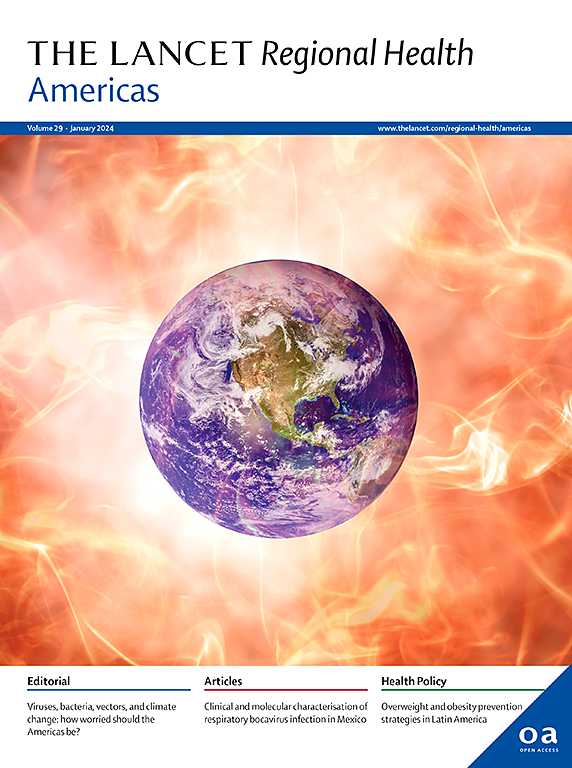Environmental justice index and prevalence of asthma and COPD in US neighborhoods- a population-based study
IF 7
Q1 HEALTH CARE SCIENCES & SERVICES
引用次数: 0
Abstract
Background
The independent effects of social and environmental factors on asthma and chronic obstructive pulmonary disease (COPD) are well-documented, but less is known about their combined impact across US neighborhoods. This study aimed to determine the combined and individual associations of neighborhood-level social vulnerability and environmental burden with the prevalence of asthma and COPD.
Methods
This cross-sectional study analyzed 71,677 US census tracts, linking the 2022 CDC Environmental Justice Index (EJI) rankings and its subcomponents (environmental burden module [EBM] and social vulnerability module [SVM]) to the 2023 CDC PLACES dataset. Multivariable quasi-Poisson regression with an offset function was used to compare covariate-adjusted risk ratios of health indicators across quartiles of neighborhood socio-environmental burden.
Findings
Among the 71,677 neighborhoods studied, the median proportion of females was 50.90%. The median proportions of individuals aged 18 to 44, 45 to 64, and ≥65 were 30.6%, 26.7%, and 15.3%, respectively, with 22.6% of the Hispanic population. Asthma and COPD prevalence rates increased with increasing EJI and EBM quartiles. Neighborhoods with the highest socio-environmental burden (Q4 EJI) had significantly higher rates of asthma (RR:1.102, 95% CI: 1.087–1.117, p < 0.001) and COPD (RR:1.156, 95% CI:1.141–1.172, p < 0.001) compared to neighborhoods with the lowest burden (Q1 EJI), after adjusting for covariates. Similarly, neighborhoods with the highest environmental burden (Q4 EBM) had higher rates of asthma (RR: 1.091, 95% CI: 1.064–1.118, p < 0.001) and COPD (RR:1.099, 95% CI: 1.070–1.129, p < 0.001) compared with Q1 EBM, after adjusting for SVM and other covariates.
Interpretation
A higher prevalence of obstructive lung disease is associated with neighborhoods experiencing high cumulative socio-environmental burden. Environmental burden showed an independent association with asthma and COPD prevalence, even after adjusting for social vulnerability and other factors.
Funding
None.
美国社区环境正义指数与哮喘和慢性阻塞性肺病患病率——一项基于人群的研究
社会和环境因素对哮喘和慢性阻塞性肺疾病(COPD)的独立影响有充分的文献记载,但对它们在美国社区的综合影响知之甚少。本研究旨在确定社区层面的社会脆弱性和环境负担与哮喘和慢性阻塞性肺病患病率的联合和个体关联。方法本横断面研究分析了71677个美国人口普查区,将2022年CDC环境正义指数(EJI)排名及其子组件(环境负担模块[EBM]和社会脆弱性模块[SVM])与2023年CDC PLACES数据集联系起来。采用带偏移函数的多变量拟泊松回归比较邻域社会环境负担各四分位数健康指标的协变量调整风险比。研究结果:在所研究的71677个社区中,女性比例中位数为50.90%。18 ~ 44岁、45 ~ 64岁和≥65岁人群的中位比例分别为30.6%、26.7%和15.3%,其中西班牙裔人群占22.6%。哮喘和COPD患病率随着EJI和EBM四分位数的增加而增加。社会环境负担最高的社区(Q4 EJI)哮喘发病率显著高于其他社区(RR:1.102, 95% CI: 1.087-1.117, p <;0.001)和COPD (RR:1.156, 95% CI:1.141 ~ 1.172, p <;0.001),与负担最低的社区(Q1 EJI)相比,在调整协变量后。同样,环境负担最高的社区(Q4 EBM)哮喘发病率较高(RR: 1.091, 95% CI: 1.064-1.118, p <;0.001)和COPD (RR:1.099, 95% CI: 1.070-1.129, p <;在调整支持向量机和其他协变量后,0.001)与Q1 EBM相比。解释:阻塞性肺疾病的高患病率与经历高累积社会环境负担的社区有关。即使在调整了社会脆弱性和其他因素后,环境负担也显示出与哮喘和慢性阻塞性肺病患病率的独立关联。
本文章由计算机程序翻译,如有差异,请以英文原文为准。
求助全文
约1分钟内获得全文
求助全文
来源期刊

Lancet Regional Health-Americas
Multiple-
CiteScore
8.00
自引率
0.00%
发文量
0
期刊介绍:
The Lancet Regional Health – Americas, an open-access journal, contributes to The Lancet's global initiative by focusing on health-care quality and access in the Americas. It aims to advance clinical practice and health policy in the region, promoting better health outcomes. The journal publishes high-quality original research advocating change or shedding light on clinical practice and health policy. It welcomes submissions on various regional health topics, including infectious diseases, non-communicable diseases, child and adolescent health, maternal and reproductive health, emergency care, health policy, and health equity.
 求助内容:
求助内容: 应助结果提醒方式:
应助结果提醒方式:


